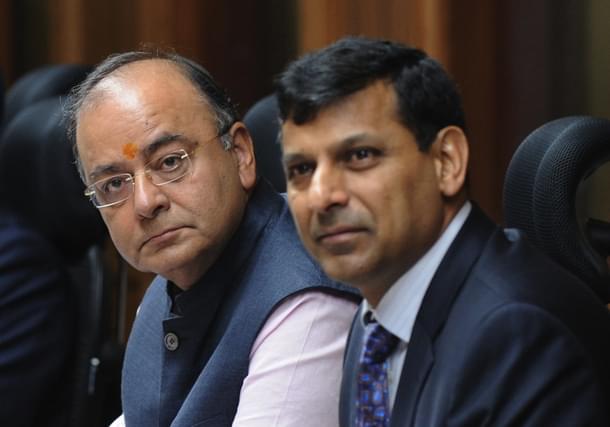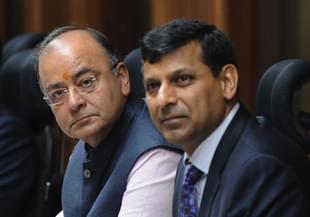Economy
Why We Need A Rajan-Jaitley Jugalbandi To Restore Confidence In Banking And Markets
R Jagannathan
Feb 12, 2016, 07:01 PM | Updated 05:58 PM IST
Save & read from anywhere!
Bookmark stories for easy access on any device or the Swarajya app.


Thanks to fresh fears about the health of the banking industry in the wake of the sharp nosedive in the profits reported by big public sector banks like State Bank, Punjab National and Bank of India, not to speak of midi banks like Central Bank and Allahabad Bank, the stock markets are clearly selling bank stocks down the river.
The BSE Bankex, for example, has lost a quarter of its value in the last six months – a fall which emphasises that there is no point trying to ask public sector banks to raise equity from the markets in the short run. In the wake of the Reserve Bank-promoted nudge to these banks to recognise more of their bad loans and stressed assets, the markets are panicking about whether Indian banks are bankable.
This was probably why Governor Raghuram Rajan was at pains yesterday (11 February) at a CII conference in Delhi to emphasise that all this bloodletting will help put the banking sector on the road to revival. Given the past tendency to hide bad loans under the carpet, he said some banks “may require deep surgery”, but “to do deep surgery such as restructuring or writing down loans, the bank has to recognise it has a problem, (and) classify the asset as a non-performing asset.”
Rajan deserves full marks for red flagging the issue, but his push to banks to start recognising the problem could lead to a panic among the public, unless both he and the finance ministry act to restore confidence.
While fixing governance issues in banks is important, that is a long-term solution, and won’t stop the bleeding right now that is causing anxiety all around. You don’t prescribe yoga and jogging just when you are about to have a heart attack. That is for later, when you want to prevent the next one.
Two short-term confidence restoring steps are thus in order.
First, the government should increase its holdings in weak banks by investing in their capital expansion plans. This would increase its short-term ownership of bank shares and cost Arun Jaitley some slippage in the fiscal deficit. But it is important to do this. Nothing restores confidence as much as the government declaring its full backing to banks. It is worth remembering that when the 2008 financial crisis almost destroyed Citibank, it was Uncle Sam who recapitalised it to restore confidence in the system.
The world’s most market-oriented economy nearly nationalised Citibank to save it, before selling off its investment at a profit. This is what Jaitley needs to do urgently. Jaitley can also force banks to revalue their undervalued assets, and sell subsidiaries that are not vital to their banking focus.
Second, there are things Rajan can do too. The RBI Governor wears two hats – one as inflation fighter, and another as the last defender of the banking system. He can’t pretend that inflation is his only target, never mind what happens to the banking system. The most effective way to strengthen bank profits – legitimately – is by lowering interest rates faster than anticipated earlier. By cutting rates, Rajan will give banks an uptick in their profits on long-dated securities, and this additional profit will enable the latter to set off losses on bad loans and recover faster. When the system is in trouble, inflation fighting has to be seen as the lesser of two priorities.
Rajan has to don his rescuer of the banking system cap more often. He needs to cut rates faster, and shift some of the inflation fighting role to Jaitley – which the latter can do by getting the government to manage food supplies more effectively and focusing efforts on specific commodities that are driving inflation.
Put in one sentence: Jaitley has to recapitalise banks faster, and Rajan has to cut rates more sharply this year.
Jagannathan is former Editorial Director, Swarajya. He tweets at @TheJaggi.





